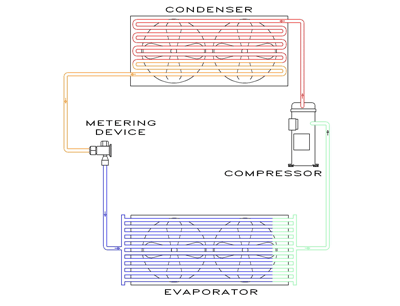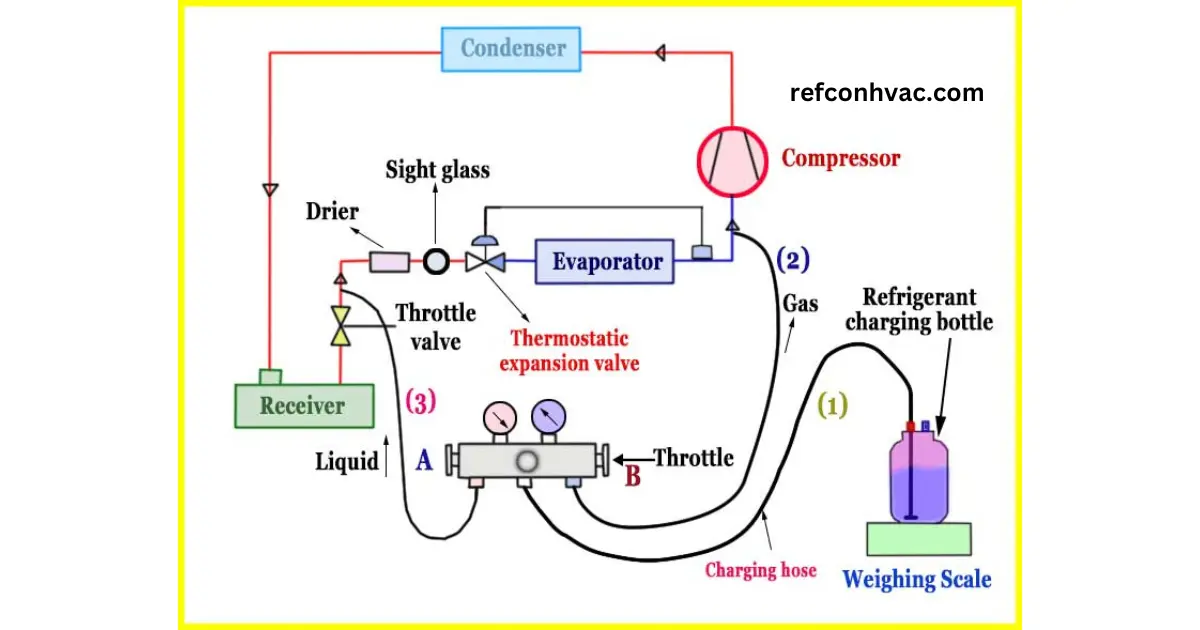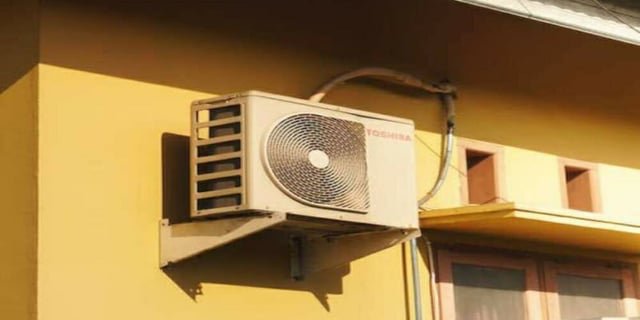Refrigerant should be removed from the condenser outlet during system repairs or decommissioning. It’s essential for compliance with environmental regulations and system maintenance.
Understanding when to remove refrigerant from the condenser outlet is vital for HVAC technicians and environmental sustainability. This procedure is typically mandated during system repairs, maintenance, or before decommissioning an air conditioning unit. Proper refrigerant removal ensures the system operates efficiently and prevents the release of harmful substances into the atmosphere.
Technicians must follow strict protocols to capture and recycle or dispose of the refrigerant in accordance with local and international laws. This step not only preserves the integrity of the HVAC system but also aligns with eco-friendly practices. Removing refrigerant correctly is a crucial aspect of HVAC maintenance that contributes to the longevity of the equipment and the protection of our environment.
Introduction To Refrigerant Removal
Introduction to Refrigerant Removal is a critical topic for anyone managing cooling systems. The process involves safely taking out refrigerant from a system’s condenser outlet. This step is crucial for maintenance, repair, or disposal of cooling equipment. Proper removal ensures systems run efficiently and prevents environmental harm.
The Role Of Refrigerant In Cooling Systems
Refrigerant is the lifeblood of cooling systems. It absorbs heat from inside and releases it outside. This cycle keeps homes, offices, and refrigerators cool. Without refrigerant, our cooling systems would not work.
Why Proper Removal Is Crucial
Removing refrigerant the right way is very important. It keeps the cooling system working well. It also protects our environment. Incorrect removal can release harmful gases into the air. These gases can hurt the ozone layer and contribute to global warming. Safe removal practices ensure we all breathe cleaner air.
- Protects the environment: Prevents harmful gases from escaping.
- Ensures system efficiency: Proper removal keeps cooling systems running smoothly.
- Legal compliance: Follows laws that require safe refrigerant handling.
Understanding when and how to remove refrigerant is key. Always follow the correct procedures. This care helps keep our planet green and our cooling systems in top shape.
Legal Requirements For Refrigerant Disposal
Handling refrigerants requires strict adherence to laws. Improper disposal harms the environment. It’s vital to understand legal obligations.
Environmental Regulations
Environmental concerns dictate refrigerant disposal protocols. The release of refrigerants into the atmosphere is illegal. They damage the ozone layer and contribute to climate change. The Clean Air Act in the United States mandates specific disposal procedures. Similar laws exist worldwide, guided by the Montreal Protocol.
Certification For Handling Refrigerants
Individuals must have certification to handle refrigerants. This ensures safe and legal management. The Environmental Protection Agency (EPA) in the United States issues certifications. Technicians must pass an exam to prove their competency.
- Technicians must recover refrigerants using approved equipment.
- Refrigerants must be stored in DOT-approved containers.
- Records of refrigerant recovery are necessary for compliance.
Signs Your System Needs Refrigerant Removal
Knowing when to remove refrigerant from a condenser outlet is key to maintaining a cooling system. Signs of needed removal often include inefficiency and physical damage. Spot these early to save time and money.
Inefficiency And Performance Decline
Refrigerant is vital for cooling performance. Over time, your system may show signs of inefficiency. This often means refrigerant removal is necessary. Look for these indicators:
- Warm air from vents instead of cold
- Longer cooling times, struggling to reach set temperatures
- Higher energy bills, indicating the system is working harder
These signs suggest the refrigerant level is not optimal. A professional can assess and remove excess or contaminated refrigerant.
Physical Damage To The System
Physical damage to your cooling system can lead to refrigerant issues. Visible signs to watch for include:
- Leaks around the condenser unit
- Ice buildup on the refrigerant line
- Hissing noises from the refrigerant circuit
These symptoms often indicate damage that has compromised refrigerant integrity. Prompt removal and repair prevent further system harm.

Credit: probrewer.com
The Refrigerant Removal Process
Understanding the refrigerant removal process is crucial for maintaining a safe and efficient HVAC system. This process involves carefully extracting refrigerant from the condenser outlet. It’s essential during system repairs, disposal, or when complying with environmental regulations. Let’s explore the correct procedure and safety measures to take.
Safety Precautions
Before starting the removal process, safety must be the top priority. The refrigerant can be hazardous, so proper precautions are necessary. Always wear protective gear, including gloves and goggles. Ensure the area is well-ventilated. Follow all guidelines provided by the Environmental Protection Agency (EPA).
Step-by-step Removal Guide
Removing refrigerant requires precision and attention to detail. Follow these steps:
- Power off the system completely.
- Connect the recovery machine to the service ports.
- Extract the refrigerant into a recovery cylinder.
- Monitor the process, ensuring no leaks occur.
- Once removed, store the refrigerant properly.
Note that specific details may vary based on system type and refrigerant used. Always consult the manufacturer’s manual or a professional technician.
Choosing The Right Time For Removal
Choosing the right time to remove refrigerant from a condenser outlet is crucial. It ensures efficiency and longevity of your HVAC system. Let’s dive into when to schedule this important maintenance task.
Seasonal Considerations
Timing matters for refrigerant removal. Seasonal shifts affect HVAC performance. Remove refrigerant when demand is low. This typically means fall or spring for many regions. Lower temperatures reduce stress on the system, making it an ideal time for maintenance.
Operational Lifespan Of The System
The system’s age plays a role. Older systems might need more frequent checks. Refrigerant removal should align with regular maintenance. This ensures the system runs smoothly. Check manufacturer guidelines. They often suggest the best times for refrigerant removal.
Handling Refrigerant Leaks
Handling refrigerant leaks is crucial in maintaining a safe environment. It ensures the efficient operation of your HVAC system. Let’s dive into how to detect leaks and manage them effectively.
Detecting Leaks
Detecting refrigerant leaks early can save time and money. Look for signs like:
- Hissing sounds from your HVAC unit.
- Ice on the compressor.
- Unexpected increase in energy bills.
- Poor cooling performance.
Use soapy water on pipes to spot bubbles from leaks. Professionals use detectors for accurate results.
Immediate Actions And Long-term Solutions
Upon detecting a leak, take these steps immediately:
- Turn off your HVAC system.
- Open windows to ventilate the area.
- Call a professional for help.
For long-term solutions, consider:
- Regular maintenance checks.
- Installing a leak detector for early warnings.
- Choosing quality equipment with warranties.
Remember, handling refrigerant requires expertise. Always seek professional assistance for repairs and maintenance.
Expert Tips For Refrigerant Conservation
Refrigerant is key for cooling systems. It’s a must to use it wisely. Here are expert tips for saving refrigerant.
Preventive Maintenance
Regular checks save refrigerant. Preventive maintenance is crucial. It finds leaks early. This stops refrigerant loss.
- Inspect your system often.
- Look for signs of leaks.
- Replace old parts.
Use a maintenance schedule. It keeps systems running well. This saves refrigerant.
Upgrading To Eco-friendly Alternatives
Old refrigerants harm the planet. New, green options are better. They’re safe for the earth.
Consider upgrading. Here’s why:
| Old Refrigerant | New Refrigerant |
|---|---|
| Harms ozone layer | Safe for ozone |
| Less efficient | More efficient |
Switching saves refrigerant and the planet.

Credit: www.quora.com
Recycling And Reclaiming Refrigerants
Recycling and reclaiming refrigerants is a critical practice. It ensures the safe and efficient use of resources. It also helps protect our environment. This section discusses the importance and methods of proper refrigerant recycling.
Benefits Of Recycling
Recycling refrigerants brings multiple benefits:
- Reduces emissions: Prevents the release of harmful gases.
- Conserves resources: Limits the need for new refrigerant production.
- Saves money: Recycling is often more cost-effective than buying new refrigerants.
- Complies with laws: Meets government regulations on refrigerant handling.
How To Recycle Refrigerants Properly
Proper recycling involves several steps:
- Identify the refrigerant: Know what type is in the system.
- Use proper equipment: Employ recovery machines and cylinders.
- Follow procedures: Adhere to guidelines for safe recovery.
- Store correctly: Keep recovered refrigerant in clean, labeled containers.
- Send to professionals: Ensure qualified handlers reclaim or dispose of it.

Credit: www.refconhvac.com
Frequently Asked Questions
When Should A Refrigerator Be Removed From The Condenser Outlet?
A refrigerator’s condenser outlet should be cleaned when the coils are dusty or the appliance is overheating. Regular maintenance, typically annually, is recommended.
When Should Refrigerant Be Recovered From The Condenser Outlet?
Refrigerant should be recovered from the condenser outlet during system repairs, decommissioning, or when mandated by environmental regulations.
What Is The Condition Of The Refrigerant After It Leaves The Condenser?
After leaving the condenser, the refrigerant is typically in a high-pressure, high-temperature liquid state, ready for the expansion valve.
Where Does Refrigerant Go When It Leaves The Condensing Unit?
After leaving the condensing unit, the refrigerant moves to the evaporator coil, where it absorbs heat and cools the indoor air.
Conclusion
Understanding the right time to remove refrigerant from the condenser outlet is crucial for HVAC efficiency and longevity. Regular system checks ensure optimal performance and prevent potential damage. Trust in professional advice for this task, as precise timing is key to maintaining your system’s health.
Remember, proactive maintenance is always better than costly repairs.

